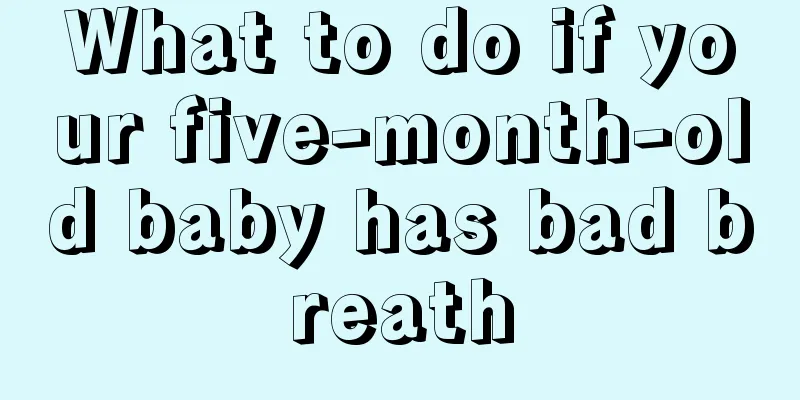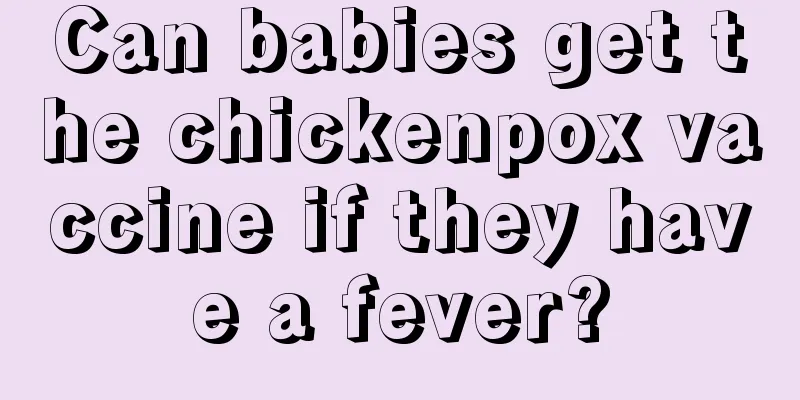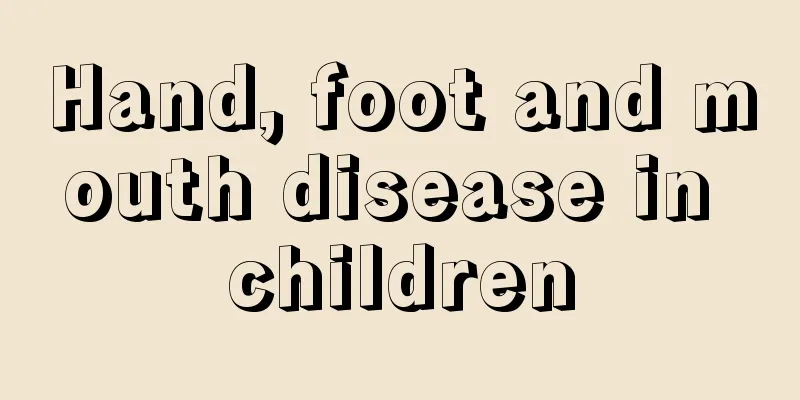Blue around the eyes of newborns

|
Newborns need careful care from their parents after birth, and they should also pay attention to any problems that may arise in the newborn at any time. What is the reason for the blue area around the newborn's eyes? The skin of a newborn is very thin, so blue eye sockets are mostly normal physiological phenomena. However, if the baby has nasal congestion or sneezing, you should be alert to blood vessel blockage caused by chronic rhinitis. Especially when the child's lips turn purple, you should pay more attention to rule out the possibility of heart disease. 1. Causes of blue eye sockets in newborns Under normal circumstances, if the newborn baby has blue areas around the eyes. This is mostly because babies have abundant veins around their eyes and thin skin. This will gradually fade with age. Not a pathological diagnosis. When the area around the baby's eyes turns blue, it is often accompanied by sneezing, nasal congestion and other phenomena. Most cases are caused by vascular obstruction due to allergic rhinitis. If the baby has blue areas around his eyes, screams and cries at night, wakes up suddenly, and has to snuggle in his mother's arms for comfort before falling asleep, it is most likely caused by fright. There is another situation that parents need to pay enough attention to. When the area around the baby's eyes, mouth, nose, and lips is blue or purple, or there is a family history of congenital heart disease, it is very likely caused by congenital heart disease. Take your baby to see a doctor promptly, identify any problems, and intervene and treat them early. 2. Reasons for baby's eye socket swelling Traditional Chinese medicine believes that puffy eyelids are mostly caused by spleen deficiency, which is unable to transport and transform water and moisture. In addition, drowsiness (eyes half open when sleeping), drooling, and drooling while sleeping are all manifestations of spleen deficiency. Once parents find that their baby has weak spleen and stomach, they must adjust the conditions in time and seek help from a doctor if necessary. However, physiological phenomena should also be ruled out. For example, puffy eyes caused by a low head position when sleeping; the eye muscles of babies under one year old are not fully developed, causing the eyes to be exposed when sleeping; babies drool a lot when teething, etc. These are all physiological phenomena. 3. Reasons for sunken eye sockets in babies It is more common in babies with vomiting, diarrhea, dehydration, or weak qi and blood. Especially for hydrocele caused by rotavirus in children, when the baby shows the following symptoms, such as sunken eye sockets, collapsed fontanelle, no tears when crying, little urine, and listlessness, it indicates that the baby is severely dehydrated and needs to seek medical attention for fluid replacement treatment in time to avoid life-threatening danger. |
<<: How many days does jaundice appear in newborns?
>>: Is it normal for a newborn to snore?
Recommend
Why do children have swollen eyes after waking up?
People should understand that babies' swollen...
How to use diapers for newborns and the size of diapers
For many people, urination is a very common thing...
The baby's temperature is less than 36 degrees after the fever injection
When the baby has a high fever, he needs to be gi...
What should I do if my one-year-old child has phlegm in his throat?
We have all experienced phlegm in our throats. Ge...
Fluoride content standard for children's toothpaste
Fluoride toothpaste can be found everywhere in ou...
How to identify ADHD in children
Children have relatively weak physical fitness. O...
How to deal with eczema after it scabs
Eczema is a very common skin disease. It is very ...
What to do if a child has knee joint effusion
Children's knees are also very fragile when t...
Clinical manifestations of gastroenteritis in children
We all know that children's physical resistan...
What should I do if my child has small eyes? Follow the experts’ advice
In people's common thinking, the bigger the e...
What should I do if my child has genital pain?
As we all know, the genitals are very important r...
What should children eat to nourish their brains?
Nowadays, many young mothers like to buy various ...
Treatment for hypothyroidism in children
Every mother wants her child to grow up healthy a...
How long does it take for baby jaundice to go away?
Parents are usually very worried when their baby ...
What is vaginal bleeding in newborns?
Some newborns have vaginal bleeding, which makes ...









